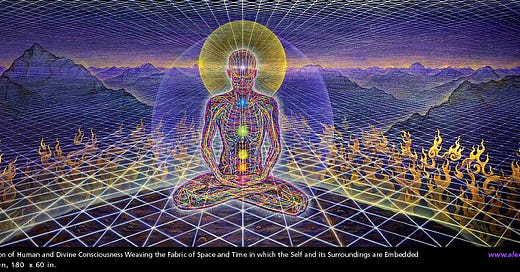“The most fundamental function of civilization is the creation and control of its own reality.
Nothing is more important.”
What you see in the news every day is the greasy-hands, nuts and bolts, tectonic grinding of layers of macro-civilizational processes.
I began in 1992 with an Atari 1040ST computer, a well-travelled copy of Avalon Hill’s Stellar Conquest board game and a question. I started with the intent of designing an “advanced” set of Stellar Conquest rules in the vein of the then popular Max’s Advanced Rules for Axis & Allies WWII board game. Stellar Conquest was a tabletop game of interstellar exploration, colonization and conquest, for four players, with cardboard counters, cards, dice, gameboard, that featured population growth, technology trees and taxation to harvest resource points. First published by Metagaming in about 1975, Stellar Conquest (probably) unintentionally coincided with Star Wars, Damnation Alley and the explosion of late-Cold War video science fiction and apocalypse movies, representing part of a “movement” in Cold War America.
There the question began to form: How do I simulate a civilization without treating populations (i.e. territories, à la the classic Risk board game) over-simplistically as armies, money, or points of any kind, e.g. Industry Points, Resource Points to buy “stuff” in the game? Where a phenomenon begins is universally recognized as being of the ultimate importance in the course, failure or success of an effort; we all know it from our own childhoods and/or raising children, you only get one chance to get it right.
The self-indulgent purpose of this Substack newsletter is to talk exclusively about Gestalt-Genesis/Day Million (“GGDM”), a sandbox macrosocial simulation game in an interstellar setting – my unapologetic lifetime obsession, magnum opus – which I published in May 2020. The subject matter of GGDM – macro-civilization processes – lends itself to a discussion of nearly every subject of civilization and it goes where it needs to go. The initial intent of this Substack newsletter is not, however, to discuss the nuts and bolts of the game processes of the simulation, but rather, to discuss the macrosocial structures that developed with the simulation game design, the ‘macrosociology or macrosocial philosophy of GGDM’ if you will.
The question asked leads down some long and diverse roads. From a simulation game point of view, the question was, what “parts” do I need to identify and incorporate dynamically to make a reasonable and playable simulation of civilization? That is, it’s a puzzle where the end picture is sort of known, but what are the parts, what do they look like?
Thus, the macro-structures and/or macrosociology of GGDM arises organically from a simulation, which is a vastly different starting point than traditional sociological approaches. GGDM was not looking for a coherent theory, or a data packet explanation, or a liberal social cause to publish articles in support of (“culture warriors,” Professor Jonathan Turner called them), but I did find a few threads and insights along the way that evolved at a glacial pace over 28 years into a unique, reasonably coherent, heterodox macrosociology.
Stellar Conquest was a classic “4X” board game, “explore, expand, exploit, exterminate” – while many of those features remain in Gestalt-Genesis/Day Million, GGDM is not a 4X game, a board game or another silly space game. GGDM evolved into a serious macrosocial simulation, a group story, a literary game, intended to engage players in the simulation that treats population as sapient volitionals and civilizations as gestalt structures.
Being an introverted intense intellectual, with an encyclopedic memory, and a life-long hobby gamer – my first three games were Avalon Hill’s Waterloo and Starship Troopers and Yaquinto’s Ironclads in about 1981 – and science fiction (“the literature of ideas” – James Gunn) grokker, must have made me the ideal person to wander into a project that ended with Gestalt-Genesis/Day Million macrosocial simulation game.
GGDM is a human game, not a boxed, manufactured product where nothing exists in the game that was not within the four corners of the box. It fully engages the Kantian “ought” as part of the game coupled with a reflection of our own history, our own current world – science fiction is often just a projection of human history into the sky or future or alternate worlds – the Kantian “is,” mixed with the designer’s own humanity, and that may not be to everyone’s liking.
But because you may not like the result, doesn’t mean it’s wrong. The game – free to all humanity, sapient beings, and extraterrestrial intelligences – can be found here:
https://clinecon.net/gestaltgenesisdaymillion/
Gestalt-Genesis/Day Million a macrosocial space-opera sandbox civilization simulation game
As you can imagine perhaps from your own life track, during those 28 years from 1992 to 2020, I graduated from college (twice), became a legal professional (paralegal), attended graduate school courses (Rhetorical Theory, Public Policy, History of the Enlightenment, etc.) and saw, read and experienced uncountable things that all wound into the macro-civilization image of GGDM.
If I have any particular skill, other than working hard and learning, it lies in integration of ideas, dynamics, “getting down to the heart of the matter” of humanity.
“This will create a resistance. I suppose the process of acceptance will pass through the usual four stages: 1) This is worthless nonsense, 2) This is an interesting, but perverse, point of view, 3) This is true, but quite unimportant, 4) I always said so.” – J.B.S. Haldane.




Why isn't the link clickable? I'll take a look at what sounds like a fascinating game but right at the start the unclickable link is a stone in the path.
A lot of next level imagination, my friend! I have trouble ordering my sock drawer! Kudos for imagineering worlds, Charles!